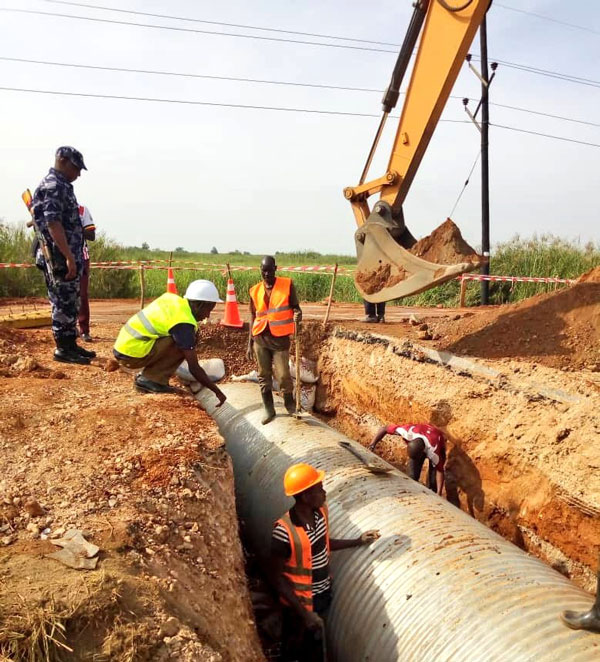
Masaka, Uganda | THE INDEPENDENT | Uganda National Roads Authority -UNRA is set to redesign and reconstruct the entire Lwera stretch on the Kampala-Masaka highway as a permanent solution to the rampant breakdowns experienced on the section of the road.
In the past four years, the 20-kilometer section of the road that runs from Mpigi to Kalungu district has been breaking down more prominently towards Christmas and Easter holidays, not only paralyzing transport but also putting the lives of hundreds of people plying the road on a daily basis at risk.
Several reports blame heavy traffic, and continuous sand mining and rice-growing activities in the area as the cause of the constant breakdown experienced on the highway, which acts as the gateway to Western Uganda, Tanzania, Burundi, Rwanda, and the Democratic Republic of Congo.
Eng. Lawrence Pariyo, Head of Bridges and structures at UNRA, says that they have been carrying out studies and inspections on the affected section to establish the cause of the breakdowns. He adds that they have established that when the road was undergoing rehabilitation, the contractor did not remove old culverts. It is these old culverts that have been sinking and breaking one by one.
Eng. Pariyo also adds that sand mining and rice growing in the areas have also greatly affected the section by altering its topography(the physical appearance of the land) and hydrology (the distribution and movement of water both on and below the Earth’s surface) . This according to him, changed the functionality of the initial design of the road.
Recently, engineers examined one of the sunken areas excavated within the hole and sideways but failed to trace the culvert.
In their assessment, the engineers pointed out that the two activities have been leading to a decrease in how soils in the area hold or let water move. They noted that the wetland no longer holds water, resulting in flooding whenever it rains.
Although the National Environment Management Authority -NEMA issued a statement warning that continuous sand mining activities and rice growing in Lwera wetland posed a serious threat to transport along the Kampala-Masaka highway, they controversially defended the continuation of the same.
For sand mining, for instance, investors stationed dredgers in the middle of the wetland and scooped tonnes of sand more than 10 metres underneath the swamp, from an area covering more than 100 kilometres across the highway. The activities create open pits that are always filled with water, which always flood the road.
The NEMA report indicated that the activity has a hidden impact on the roads from the logging water and heavy trucks ferrying sand, which is rarely discussed.
Putting all those factors into consideration, Pariyo says they are now re-engineering the section to come up with a lasting solution. He also hinted at the possibility of raising some sections of the wetland with bridges other than the existing culverts.
The road in question was upgraded to a Grade II bituminous surface in 2013 at a cost of sh103 billion shillings. Besides the effect of sand and rice, engineers have also pointed to poor construction and delayed maintenance as the likely causes of some of the defects being seen on the highway a few years after its reconstruction.
But Sam Mwesigwa, an engineer in Wakiso is not impressed by UNRA’s assessment of the problem and he blames it on inadequate engineering skills. In a recent interview with URN Mwesigwa noted that the designers of Masaka Road could have failed to put appropriate features in areas where they were needed.
He based his argument on the fact that many other wetland sections have been experiencing similar issues, yet there are no major human activities happening on the scale of sand mining and rice farming in Lwera.
****
URN
 The Independent Uganda: You get the Truth we Pay the Price
The Independent Uganda: You get the Truth we Pay the Price




A perfect engineering design such as one done at Nambigirwa Bridge along KEE, would permanently put all flaws and breakdowns to sleep, if adopted for the Lwera stretch and indeed for sections of roads through wetlands, versus the fillups that disrupt waterflows and eventually get washed away in wet seasons.
It is quite a venture in terms of costs and time, But it is doable and worthwhile.